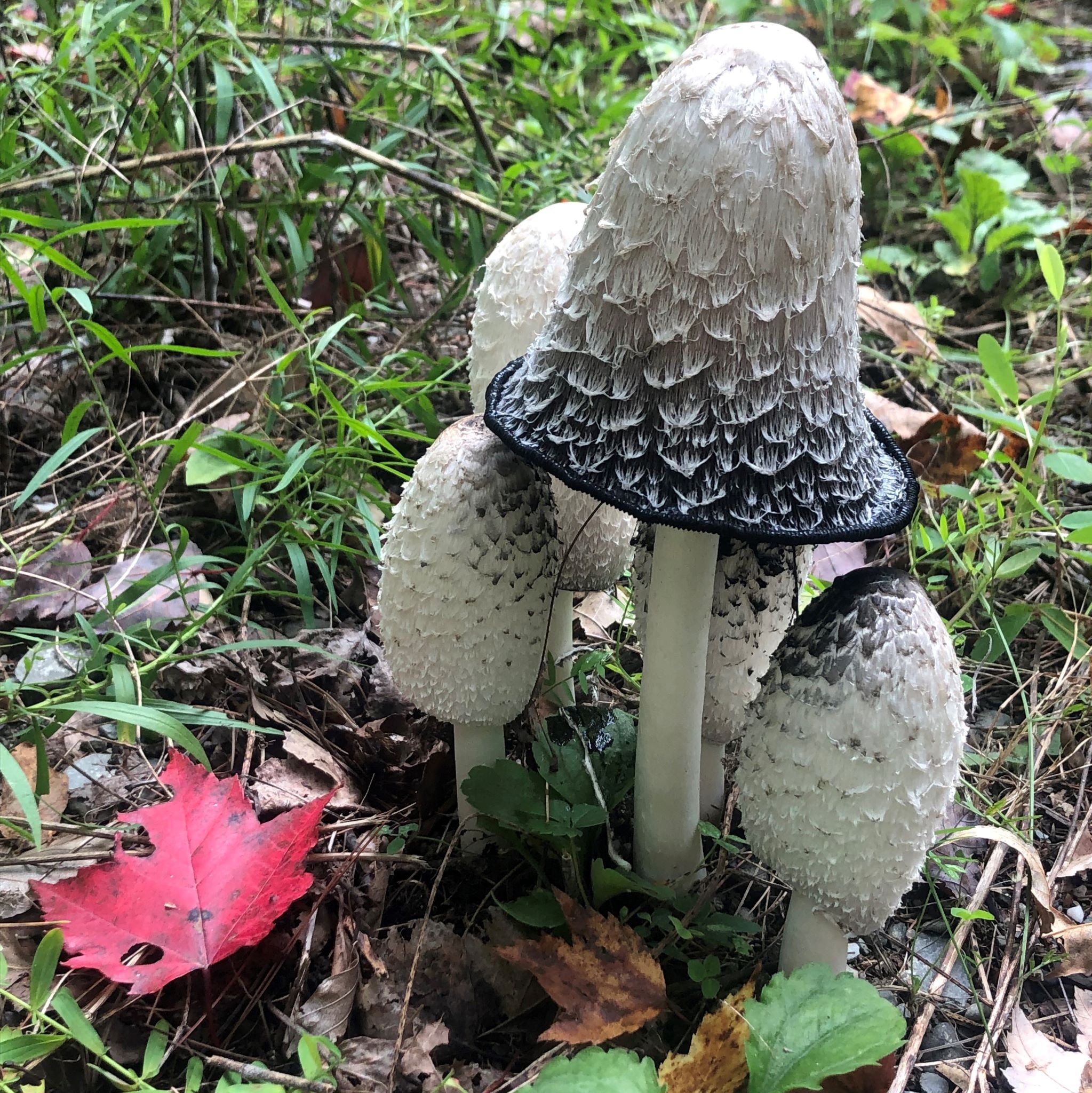Mushrooms That Digest Themselves? It Must Be Halloween
As the season's parade of mushrooms nears its end, the shaggy manes, or shaggy ink caps, put on a spooktakular display.
I came upon a fairly fresh clump of these common mushrooms on Oct. 2, likely a day or two after the oldest cap first pushed through the surface. The tallest of the mushrooms was already beginning to curl upwards and leak its namesake black ink onto the younger caps below. In the series below, I document their decay with daily photos over 6 days.
Shaggy mane mushrooms, Coprinus comatus, are members of the inky cap family and use a process called autodigestion to release their spores. They may begin to digest their own caps (!) within 24 hours of emerging from below the ground. As they digest, they drip black goo or “ink”.
One of the more common late-season mushrooms in Maine, look for shaggy manes in lawns, parks and disturbed areas like roadsides and trails. If you spy just one clump, keep watch on the area and you will likely see additional shaggy manes emerge over the next week or so. The fruiting body starts as a creamy white, somewhat shaggy cap that is tall and slightly oval shaped, tightly clasping a thin white stem. The cap quickly starts to fold upwards as autodigestion causes the gills to open and secrete a black, inky liquid filled with spores.
Competent mushroom foragers consider shaggy mane an edible before the autodigestion process begins, but as with all mushrooms, the cost of misidentification is high! Another common mushroom often confused with shaggy mane is known as the vomiter mushroom - Chlorophyllum molybdites is responsible for many cases of mushroom poisoning due to its similarity with shaggy mane. Another inky cap family member, common ink cap Coprinopsis atramentaria, is also poisonous, especially when consumed with alcohol.
For me, the risks associated with mushroom foraging outweigh the enjoyment factor, so I’ll leave the shaggy manes to eat themselves!
— Jennifer Brockway, Somerset SWCD Outreach Coordinator






